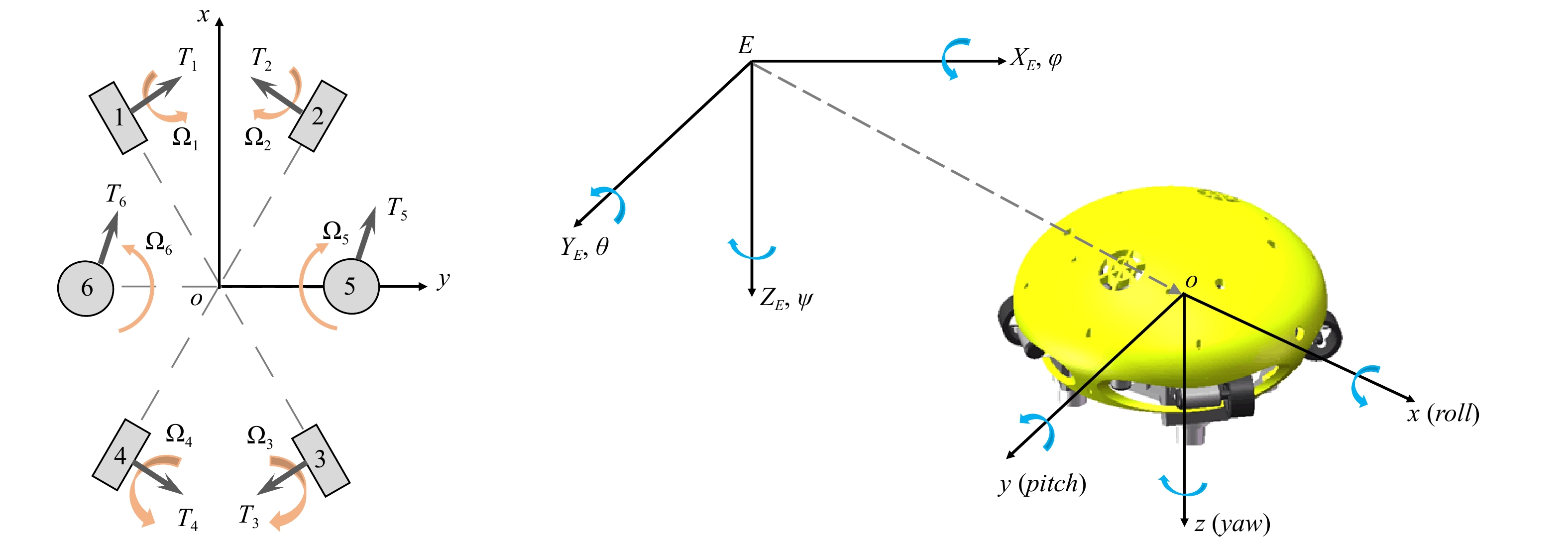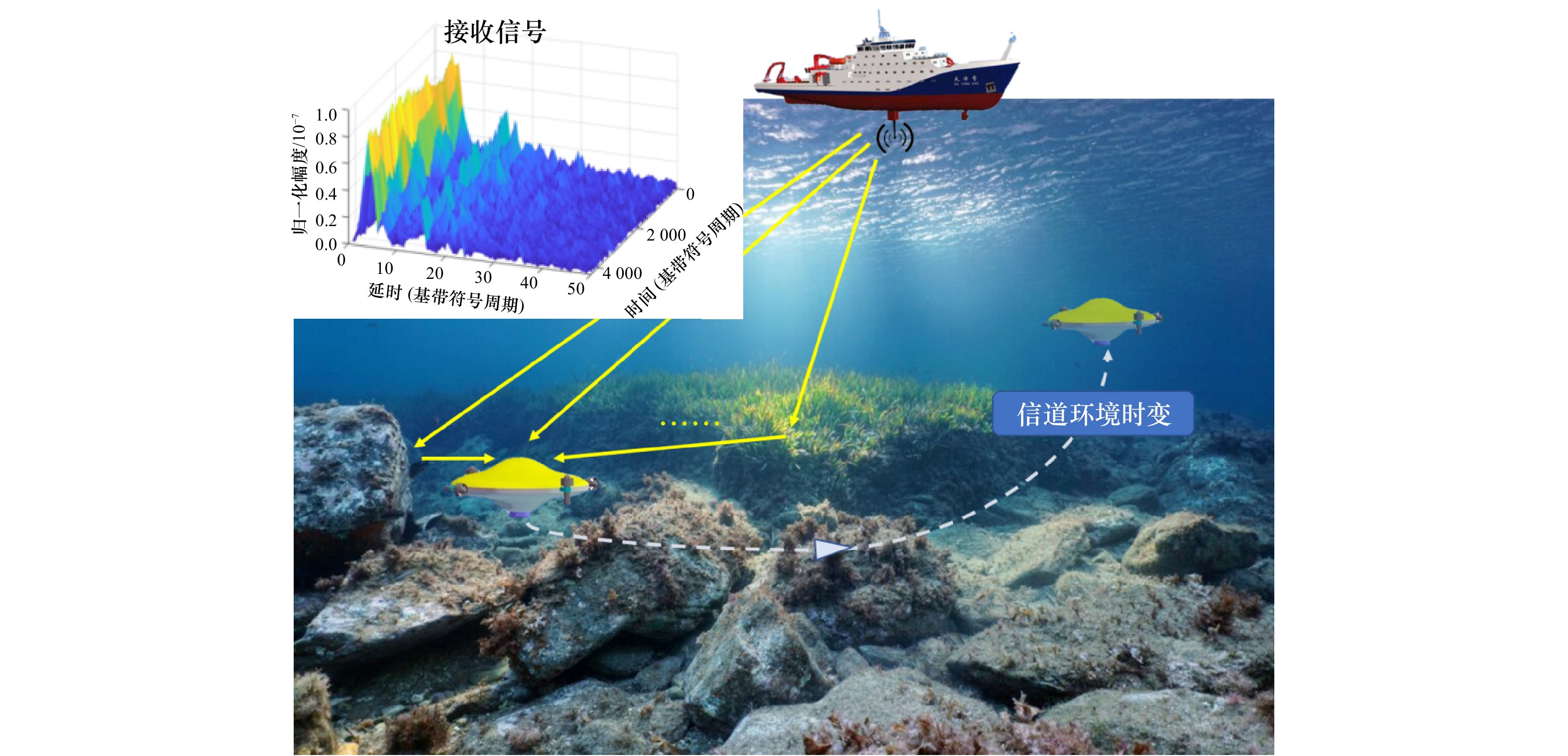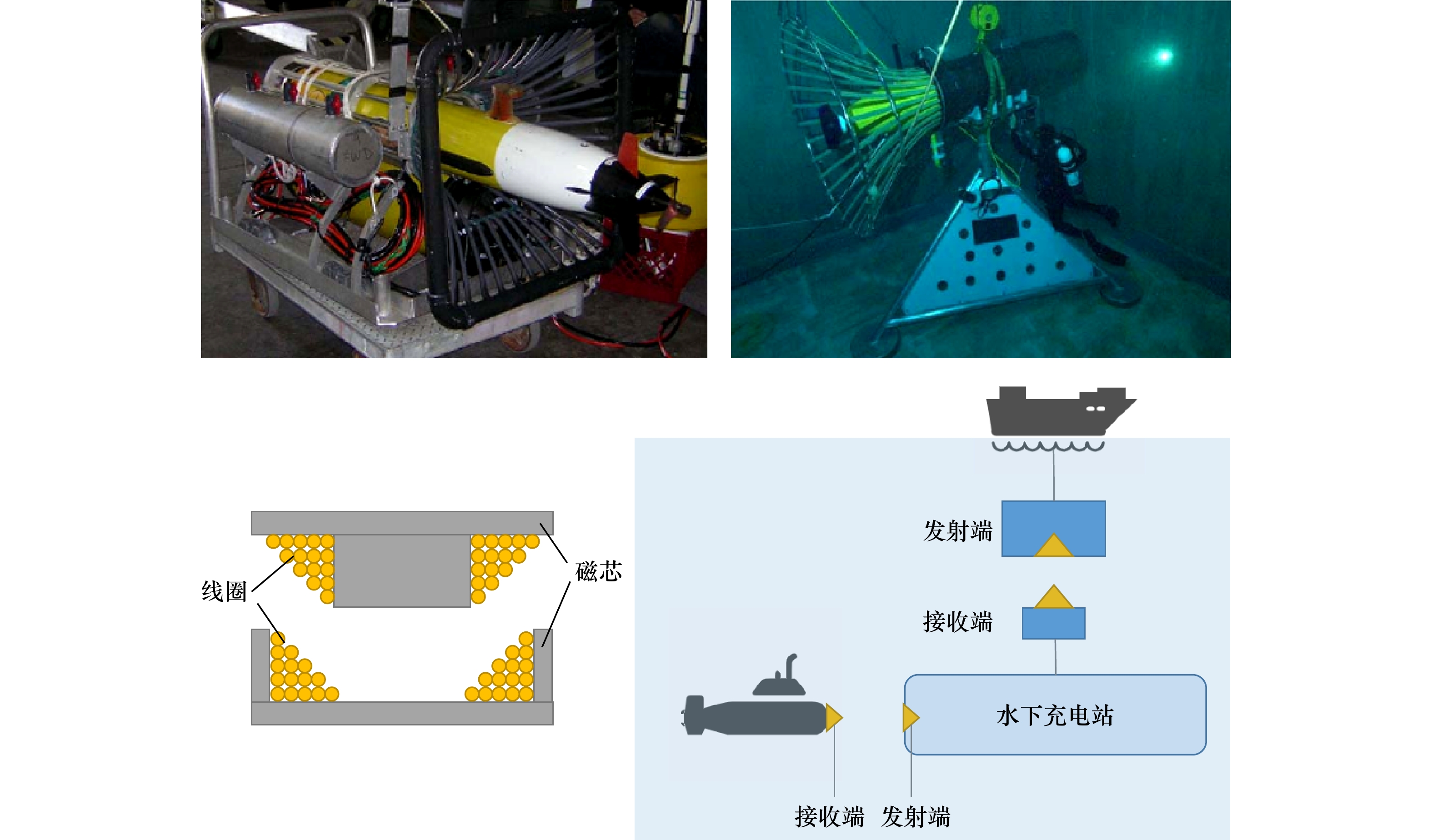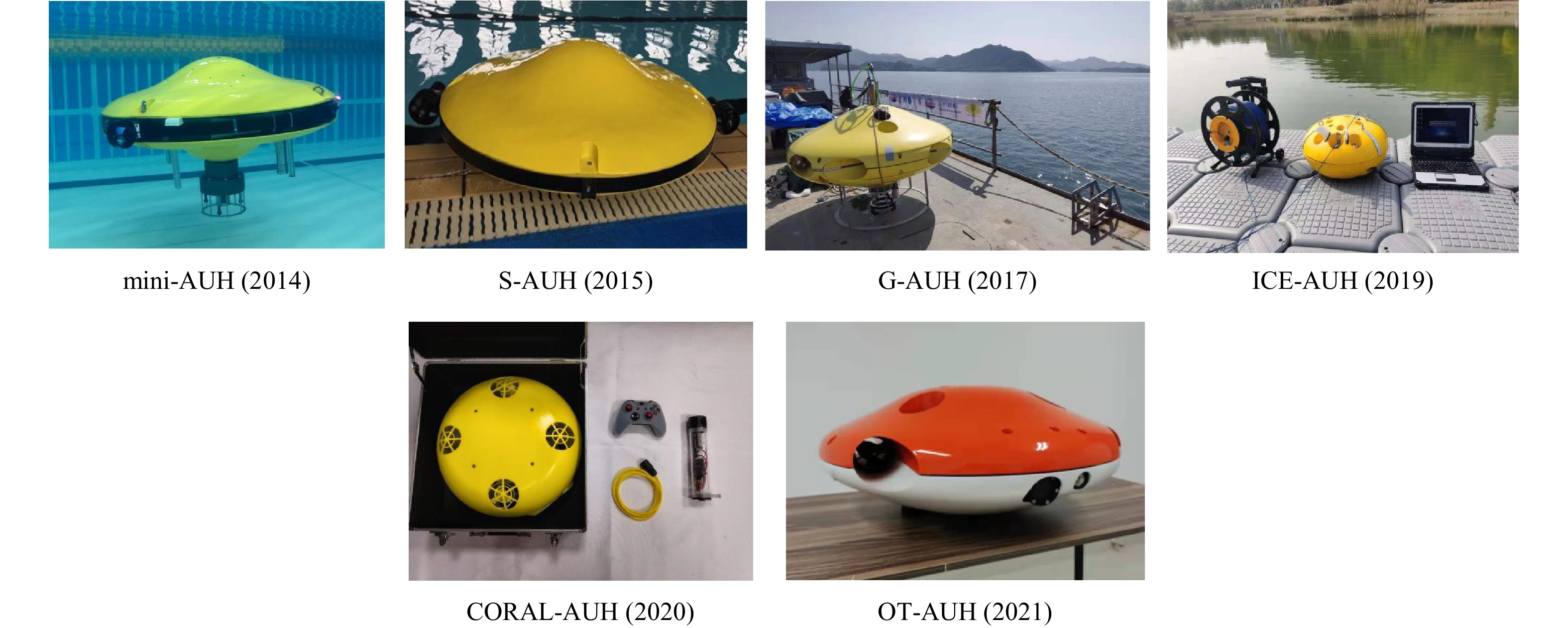| [1] |
陈鹰, 杨灿军, 陶春辉, 等. 海底观测系统[M]. 北京: 海洋出版社, 2006.Chen Ying, Yang Canjun, Tao Chunhui, et al. Deep Sea Observatory System[M]. Beijing: China Ocean Press, 2006.
|
| [2] |
Doya C, Chatzievangelou D, Bahamon N, et al. Seasonal monitoring of deep-sea megabenthos in Barkley Canyon cold seep by internet operated vehicle (IOV)[J]. PLoS One, 2017, 12(5): e0176917. doi: 10.1371/journal.pone.0176917
|
| [3] |
Laschi C, Mazzolai B, Cianchetti M. Soft robotics: technologies and systems pushing the boundaries of robot abilities[J]. Science Robotics, 2016, 1(1): eaah3690. doi: 10.1126/scirobotics.aah3690
|
| [4] |
Yoshida H, Aoki T, Osawa H, et al. A deepest depth ROV for sediment sampling and its sea trial result[C]//Proceedings of 2007 Symposium on Underwater Technology and Workshop on Scientific Use of Submarine Cables and Related Technologies. Tokyo: IEEE, 2007: 28−33.
|
| [5] |
Katzschmann R K, Marchese A D, Rus D. Hydraulic autonomous soft robotic fish for 3D swimming[M]//Hsieh M A, Khatib O, Kumar V. Experimental Robotics: The 14th International Symposium on Experimental Robotics. Cham: Springer, 2016: 405−420.
|
| [6] |
Marchese A D, Onal C D, Rus D. Autonomous soft robotic fish capable of escape maneuvers using fluidic elastomer actuators[J]. Soft Robotics, 2014, 1(1): 75−87. doi: 10.1089/soro.2013.0009
|
| [7] |
Marras S, Porfiri M. Fish and robots swimming together: attraction towards the robot demands biomimetic locomotion[J]. Journal of the Royal Society Interface, 2012, 9(73): 1856−1868. doi: 10.1098/rsif.2012.0084
|
| [8] |
Cloitre A, Arensen B, Patrikalakis N M, et al. Propulsive performance of an underwater soft biomimetic batoid robot[C]//Proceedings of the Twenty-fourth International Ocean and Polar Engineering Conference. Busan: ISOPE, 2014: 1712−1717.
|
| [9] |
Li Tiefeng, Li Guorui, Liang Yiming, et al. Fast-moving soft electronic fish[J]. Science Advances, 2017, 3(4): e1602045. doi: 10.1126/sciadv.1602045
|
| [10] |
Suzumori K, Endo S, Kanda T, et al. A bending pneumatic rubber actuator realizing soft-bodied manta swimming robot[C]//Proceedings 2007 IEEE International Conference on Robotics and Automation. Rome: IEEE, 2007: 4975−4980.
|
| [11] |
Calisti M, Giorelli M, Levy G, et al. An octopus-bioinspired solution to movement and manipulation for soft robots[J]. Bioinspiration & Biomimetics, 2011, 6(3): 036002.
|
| [12] |
Purser A, Thomsen L, Barnes C, et al. Temporal and spatial benthic data collection via an internet operated Deep Sea Crawler[J]. Methods in Oceanography, 2013, 5: 1−18. doi: 10.1016/j.mio.2013.07.001
|
| [13] |
Picardi G, Chellapurath M, Iacoponi S, et al. Bioinspired underwater legged robot for seabed exploration with low environmental disturbance[J]. Science Robotics, 2020, 5(42): eaaz1012. doi: 10.1126/scirobotics.aaz1012
|
| [14] |
Song Zhuoyuan, Marburg A, Manalang D. Resident subsea robotic systems: a review[J]. Marine Technology Society Journal, 2020, 54(5): 21−31 doi: 10.4031/MTSJ.54.5.4
|
| [15] |
Singh H, Can Ali, Eustice R, et al. Seabed AUV offers new platform for high-resolution imaging[J]. Eos, Transactions American Geophysical Union, 2004, 85(31): 289−296.
|
| [16] |
Albiez J, Joyeux S, Gaudig C, et al. FlatFish—a compact subsea-resident inspection AUV[C]//Proceedings of the OCEANS 2015-MTS/IEEE Washington. Washington: IEEE, 2015.
|
| [17] |
Bettle M C, Gerber A G, Watt G D. Unsteady analysis of the six DOF motion of a buoyantly rising submarine[J]. Computers & Fluids, 2009, 38(9): 1833−1849.
|
| [18] |
Borlaug I L G, Pettersen K Y, Gravdahl J T. Combined kinematic and dynamic control of vehicle-manipulator systems[J]. Mechatronics, 2020, 69: 102380. doi: 10.1016/j.mechatronics.2020.102380
|
| [19] |
Phillips A, Furlong M, Turnock S R. The use of computational fluid dynamics to assess the hull resistance of concept autonomous underwater vehicles[C]//Proceedings of the OCEANS 2007-Europe. Aberdeen: IEEE, 2007: 1−6.
|
| [20] |
Phillips A B, Turnock S R, Furlong M. The use of computational fluid dynamics to aid cost-effective hydrodynamic design of autonomous underwater vehicles[C]//Proceedings of the Institution of Mechanical Engineers, Part M: Journal of Engineering for the Maritime Environment, 2010, 224(4): 239−254.
|
| [21] |
Li Yongcheng, Hu Jianxin, Zhao Qiuzhuo, et al. Hydrodynamic performance of autonomous underwater gliders with active twin undulatory wings of different aspect ratios[J]. Journal of Marine Science and Engineering, 2020, 8(7): 476. doi: 10.3390/jmse8070476
|
| [22] |
Li Yongcheng, Pan Dingyi, Zhao Qiaosheng, et al. Hydrodynamic performance of an autonomous underwater glider with a pair of bioinspired hydro wings—A numerical investigation[J]. Ocean Engineering, 2018, 163: 51−57. doi: 10.1016/j.oceaneng.2018.05.052
|
| [23] |
Sun Tongshuai, Chen Guangyao, Yang Shaoqiong, et al. Design and optimization of a bio-inspired hull shape for AUV by surrogate model technology[J]. Engineering Applications of Computational Fluid Mechanics, 2021, 15(1): 1057−1074. doi: 10.1080/19942060.2021.1940287
|
| [24] |
Honaryar A, Ghiasi M. Design of a bio-inspired hull shape for an AUV from hydrodynamic stability point of view through experiment and numerical analysis[J]. Journal of Bionic Engineering, 2018, 15(6): 950−959. doi: 10.1007/s42235-018-0083-z
|
| [25] |
Alvarez A, Bertram V, Gualdesi L. Hull hydrodynamic optimization of autonomous underwater vehicles operating at snorkeling depth[J]. Ocean Engineering, 2009, 36(1): 105−112. doi: 10.1016/j.oceaneng.2008.08.006
|
| [26] |
Divsalar K. Improving the hydrodynamic performance of the SUBOFF bare hull model: a CFD approach[J]. Acta Mechanica Sinica, 2020, 36(1): 44−56. doi: 10.1007/s10409-019-00913-7
|
| [27] |
Du Xiaoxu, Wang Huan, Hao Chengzhi, et al. Analysis of hydrodynamic characteristics of unmanned underwater vehicle moving close to the sea bottom[J]. Defence Technology, 2014, 10(1): 76−81. doi: 10.1016/j.dt.2014.01.007
|
| [28] |
Salari M, Rava A. Numerical investigation of hydrodynamic flow over an AUV moving in the water-surface vicinity considering the laminar-turbulent transition[J]. Journal of Marine Science and Application, 2017, 16(3): 298−304. doi: 10.1007/s11804-017-1422-x
|
| [29] |
Wu Lihong, Li Yiping, Su Shaojuan, et al. Hydrodynamic analysis of AUV underwater docking with a cone-shaped dock under ocean currents[J]. Ocean Engineering, 2014, 85: 110−126. doi: 10.1016/j.oceaneng.2014.04.022
|
| [30] |
Wang Xihui, Shi Yao, Pan Guang, et al. Numerical research on the high-speed water entry trajectories of AUVs with asymmetric nose shapes[J]. Ocean Engineering, 2021, 234: 109274. doi: 10.1016/j.oceaneng.2021.109274
|
| [31] |
da Silva Costa G, Ruiz A, Reis M A, et al. Numerical analysis of stability and manoeuvrability of Autonomous Underwater Vehicles (AUV) with fishtail shape[J]. Ocean Engineering, 2017, 144: 320−326. doi: 10.1016/j.oceaneng.2017.08.030
|
| [32] |
朝黎明. 仿蝠鲼自主变形翼水动力性能研究[D]. 西安: 西北工业大学, 2019.Zhao Liming. Hydrodynamic performance of actively mata-inspired deformed foil[D]. Xi’an: Northwestern Polytechnical University, 2019.
|
| [33] |
Lin Yuan, Huang Yue, Zhu Hai, et al. Simulation study on the hydrodynamic resistance and stability of a disk-shaped autonomous underwater helicopter[J]. Ocean Engineering, 2021, 219: 108385. doi: 10.1016/j.oceaneng.2020.108385
|
| [34] |
An Xinyu, Chen Ying, Huang Haocai. Parametric design and optimization of the profile of autonomous underwater helicopter based on NURBS[J]. Journal of Marine Science and Engineering, 2021, 9(6): 668. doi: 10.3390/jmse9060668
|
| [35] |
Chen Chenwei, Chen Ying, Cai Qianwen. Hydrodynamic-interaction analysis of an autonomous underwater hovering vehicle and ship with wave effects[J]. Symmetry, 2019, 11(10): 1213. doi: 10.3390/sym11101213
|
| [36] |
Chen Chenwei, Jiang Yong, Huang Haocai, et al. Computational fluid dynamics study of the motion stability of an autonomous underwater helicopter[J]. Ocean Engineering, 2017, 143: 227−239. doi: 10.1016/j.oceaneng.2017.07.020
|
| [37] |
吴玉崭, 张平. 推力矢量对飞机敏捷性影响的研究[C]//第13届中国系统仿真技术及其应用学术年会论文集. 大理: 美国科研出版社, 2011.Wu Yuzhan, Zhang Ping. Research on the influence of thrust vectoring on aircraft agility[C]//Proceedings of the 13th China Annual Conference on System Simulation Technology and Its Applications. Dali: Scientific Research Publishing, 2011.
|
| [38] |
王博. 基于飞行品质、敏捷性要求的控制律设计方法研究[D]. 南京: 南京航空航天大学, 2008.Wang Bo. Research on a control law design method considering flying qualities and agility[D]. Nanjing: Nanjing University of Aeronautics and Astronautics, 2008.
|
| [39] |
Kumar V S, Rajagopal P. Optimising the turning performance of serial split-hull underwater vehicles[J]. Ocean Engineering, 2022, 261: 112099. doi: 10.1016/j.oceaneng.2022.112099
|
| [40] |
Gao Dongqi, Wang Tong, Qin Fenghua, et al. Design, fabrication, and testing of a maneuverable underwater vehicle with a hybrid propulsor[J]. Biomimetic Intelligence and Robotics, 2022, 2(4): 100072. doi: 10.1016/j.birob.2022.100072
|
| [41] |
Low K H, Willy A. Biomimetic motion planning of an undulating robotic fish fin[J]. Journal of Vibration and Control, 2006, 12(12): 1337−1359. doi: 10.1177/1077546306070597
|
| [42] |
Hu Tianjiang, Wang Guangming, Shen Lincheng, et al. A novel conceptual fish-like robot inspired by rhinecanthus aculeatus[C]//Proceedings of the 9th International Conference on Control, Automation, Robotics and Vision. Singapore: IEEE, 2006: 1−5.
|
| [43] |
段斐. 微小型水下机器人运动仿真研究[D]. 哈尔滨: 哈尔滨工程大学, 2012.Duan Fei. Research on motion simulation for mini autonomous underwater vehicle[D]. Harbin: Harbin Engineering University, 2012.
|
| [44] |
Lekkas A M, Fossen T I. Minimization of cross-track and along-track errors for path tracking of marine underactuated vehicles[C]//Proceedings of the 2014 European Control Conference. Strasbourg: IEEE, 2014: 3004−3010.
|
| [45] |
Fredriksen E, Pettersen K Y. Global κ-exponential way-point maneuvering of ships: theory and experiments[J]. Automatica, 2006, 42(4): 677−687. doi: 10.1016/j.automatica.2005.12.020
|
| [46] |
Fossen T I, Breivik M, Skjetne R. Line-of-sight path following of underactuated marine craft[J]. IFAC Proceedings Volumes, 2003, 36(21): 244−249.
|
| [47] |
Lekkas A M, Fossen T I. A time-varying lookahead distance guidance law for path following[J]. IFAC Proceedings Volumes, 2012, 45(27): 398−403. doi: 10.3182/20120919-3-IT-2046.00068
|
| [48] |
Liao Yulei, Wan Lei, Zhuang Jiayuan. Backstepping dynamical sliding mode control method for the path following of the underactuated surface vessel[J]. Procedia Engineering, 2011, 15: 256−263. doi: 10.1016/j.proeng.2011.08.051
|
| [49] |
Güneş A, Güllü V A Ï. Performance comparison of target tracking filters in underwater multipath environments[C]//Proceedings of the 29th Signal Processing and Communications Applications Conference. Istanbul: IEEE, 2021: 1−4.
|
| [50] |
Song Haiyan, Yang Changyi. Anti-multipath near-field localization in multi-path underwater acoustic channel[C]//Proceedings of 2021 IEEE International Conference on Consumer Electronics-Taiwan. Penghu, China: IEEE, 2021: 1−2.
|
| [51] |
Lohrasbipeydeh H, Mosayyebpour S, Gulliver T A. Single hydrophone passive acoustic sperm whale range and depth estimation[C]//Proceedings of 2013 IEEE International Conference on Acoustics, Speech and Signal Processing. Vancouver: IEEE, 2013: 754−757.
|
| [52] |
孙华, 陈韶华, 龙小民. 基于多径时延估计的单水听器被动定位[J]. 水雷战与舰船防护, 2016, 24(1): 11−13, 23.Sun Hua, Chen Shaohua, Long Xiaomin. Passive localization with single hydrophone based on multipath time delay estimation[J]. Mine Warfare & Self-Defence, 2016, 24(1): 11−13, 23.
|
| [53] |
Dos Santos M M, De Giacomo G G, Drews P L J, et al. Matching color aerial images and underwater sonar images using deep learning for underwater localization[J]. IEEE Robotics and Automation Letters, 2020, 5(4): 6365−6370. doi: 10.1109/LRA.2020.3013852
|
| [54] |
Zhang Jing, Cao Yu, Han Guangyao, et al. Deep neural network-based underwater OFDM receiver[J]. IET Communications, 2019, 13(13): 1998−2002. doi: 10.1049/iet-com.2019.0243
|
| [55] |
Lee-Leon A, Yuen C, Herremans D. Underwater acoustic communication receiver using deep belief network[J]. IEEE Transactions on Communications, 2021, 69(6): 3698−3708. doi: 10.1109/TCOMM.2021.3063353
|
| [56] |
Rauchenstein L T, Vishnu A, Li Xinya, et al. Improving underwater localization accuracy with machine learning[J]. Review of Scientific Instruments, 2018, 89(7): 074902. doi: 10.1063/1.5012687
|
| [57] |
Yan Jing, Meng Yuan, Yang Xian, et al. Privacy-preserving localization for underwater sensor networks via deep reinforcement learning[J]. IEEE Transactions on Information Forensics and Security, 2021, 16: 1880−1895. doi: 10.1109/TIFS.2020.3045320
|
| [58] |
Kawasaki T, Fukasawa T, Noguchi T, et al. Development of AUV “marine bird” with underwater docking and recharging system[C]//Proceedings of 2003 International Conference Physics and Control. Proceedings. Tokyo: IEEE, 2003: 166−170.
|
| [59] |
Oiler J, Anderson G, Bana V, et al. Thermal and biofouling effects on underwater wireless power transfer[C]//Proceedings of 2015 IEEE Wireless Power Transfer Conference. Boulder: IEEE, 2015: 1−4.
|
| [60] |
Gish L A. Design of an AUV recharging system[D]. Cambridge: Massachusetts Institute of Technology, 2004.
|
| [61] |
Miller B D. Design of an AUV recharging system[D]. Cambridge: Massachusetts Institute of Technology, 2005.
|
| [62] |
Kawasaki T, Noguchi T, Fukasawa T, et al. “Marine Bird”, a new experimental AUV-results of docking and electric power supply tests in sea trials[C]//Proceedings of the Oceans '04 MTS/IEEE Techno-Ocean '04. Kobe: IEEE, 2004: 1738–1744.
|
| [63] |
Kojiya T, Sato F, Matsuki H, et al. Automatic power supply system to underwater vehicles utilizing non-contacting technology[C]//Proceedings of the Oceans '04 MTS/IEEE Techno-Ocean '04. Kobe: IEEE, 2014: 2341−2345.
|
| [64] |
Kojiya T, Sato F, Matsuki H, et al. Construction of non-contacting power feeding system to underwater vehicle utilizing electro magnetic induction[C]//Proceedings of the Europe Oceans 2005. Brest: IEEE, 2005: 709−712.
|
| [65] |
Allen B, Austin T, Forrester N, et al. Autonomous docking demonstrations with enhanced REMUS technology[C]//Proceedings of the OCEANS 2006. Boston: IEEE, 2006: 1−6.
|
| [66] |
张强, 王玉峰. 海洋浮标的非接触式电能与数据传输[J]. 仪器仪表学报, 2010, 31(11): 2615−2621. doi: 10.19650/j.cnki.cjsi.2010.11.034Zhang Qiang, Wang Yufeng. Noncontact power and data delivery for ocean observation mooring buoy[J]. Chinese Journal of Scientific Instrument, 2010, 31(11): 2615−2621. doi: 10.19650/j.cnki.cjsi.2010.11.034
|
| [67] |
Cai Chengye, Rong Zhenwei, Chen Zheng, et al. A resident subsea docking system with a real-time communication buoy moored by an electro-optical-mechanical cable[J]. Ocean Engineering, 2023, 271: 113729. doi: 10.1016/j.oceaneng.2023.113729
|
| [68] |
Chen Chenwei, Lu Yifan. Computational fluid dynamics study of water entry impact forces of an airborne-launched, axisymmetric, disk-type Autonomous underwater hovering vehicle[J]. Symmetry, 2019, 11(9): 1100. doi: 10.3390/sym11091100
|
| [69] |
Guo Jin, Lin Yuan, Lin Peiwen, et al. Study on hydrodynamic characteristics of the disk-shaped autonomous underwater helicopter over sea-beds[J]. Ocean Engineering, 2022, 266: 113132. doi: 10.1016/j.oceaneng.2022.113132
|
| [70] |
Lin Yuan, Guo Jin, Li Haonan, et al. Improvement of hydrodynamic performance of the disk-shaped autonomous underwater helicopter by local shape modification[J]. Ocean Engineering, 2022, 260: 112056. doi: 10.1016/j.oceaneng.2022.112056
|
| [71] |
石凯, 王晓辉, 徐会希, 等. 水下直升机无模型参数自适应滑模控制[J]. 舰船科学技术, 2022, 44(10): 73−79.Shi Kai, Wang Xiaohui, Xu Huixi, et al. Model-free parameter adaptive sliding mode control for autonomous underwater helicopters[J]. Ship Science and Technology, 2022, 44(10): 73−79.
|




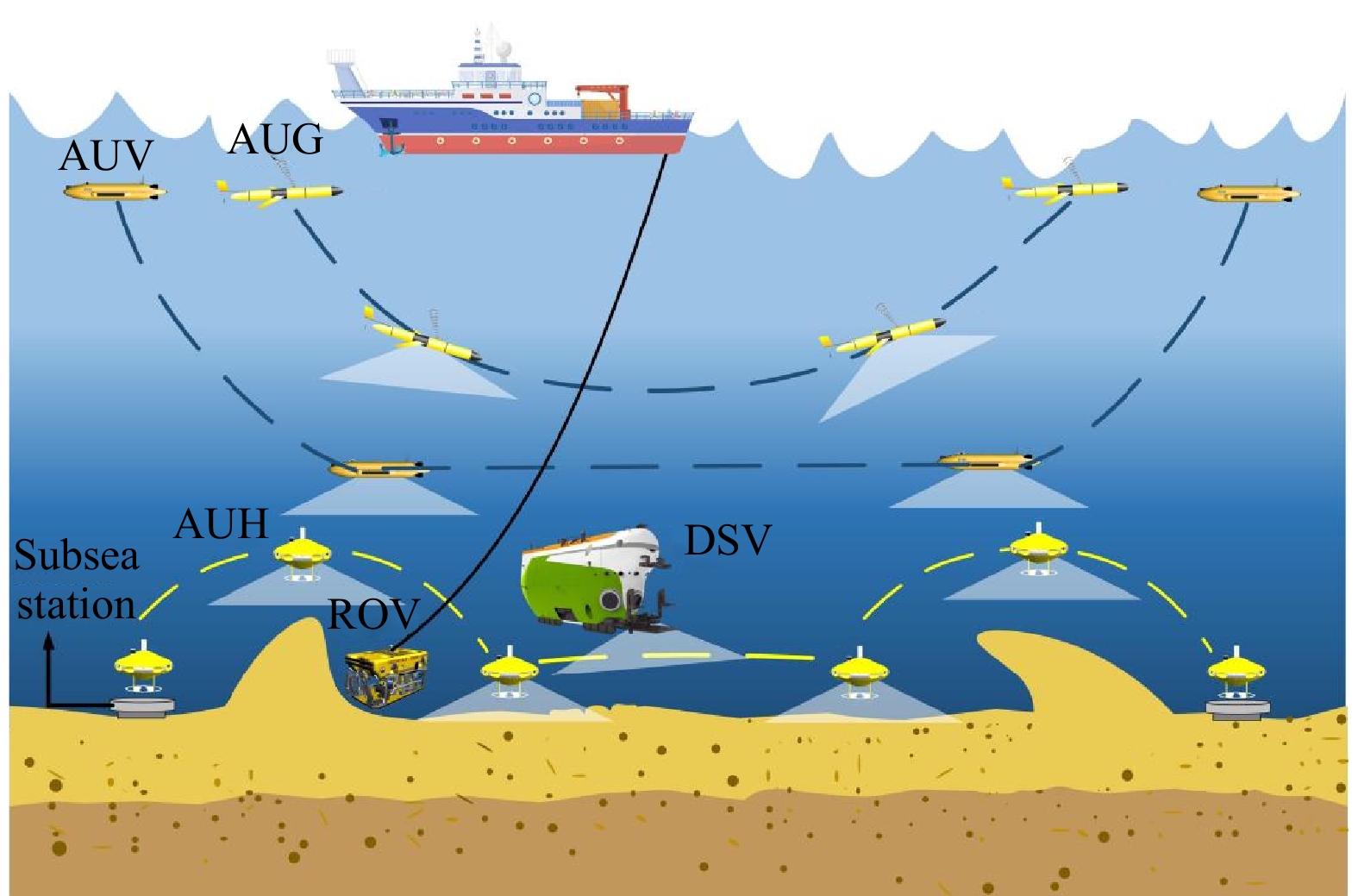
 下载:
下载:



